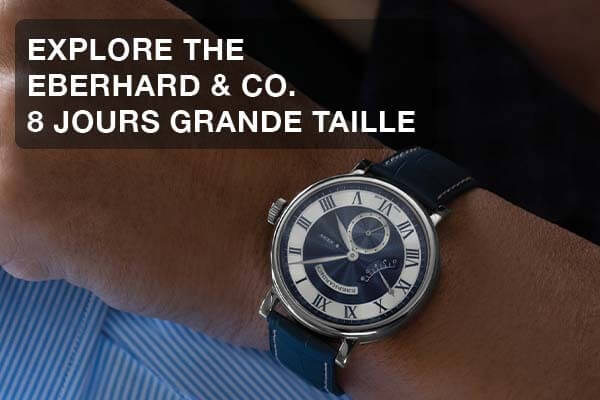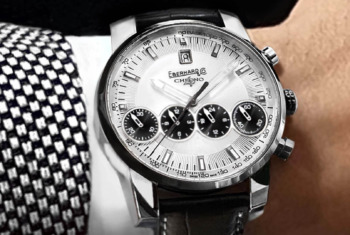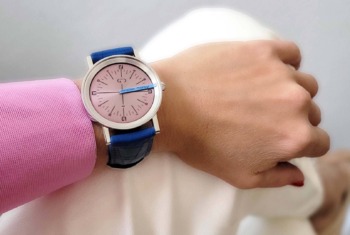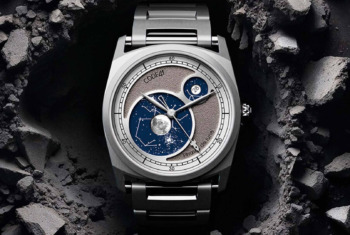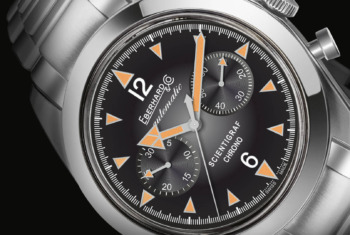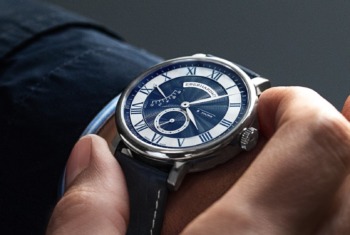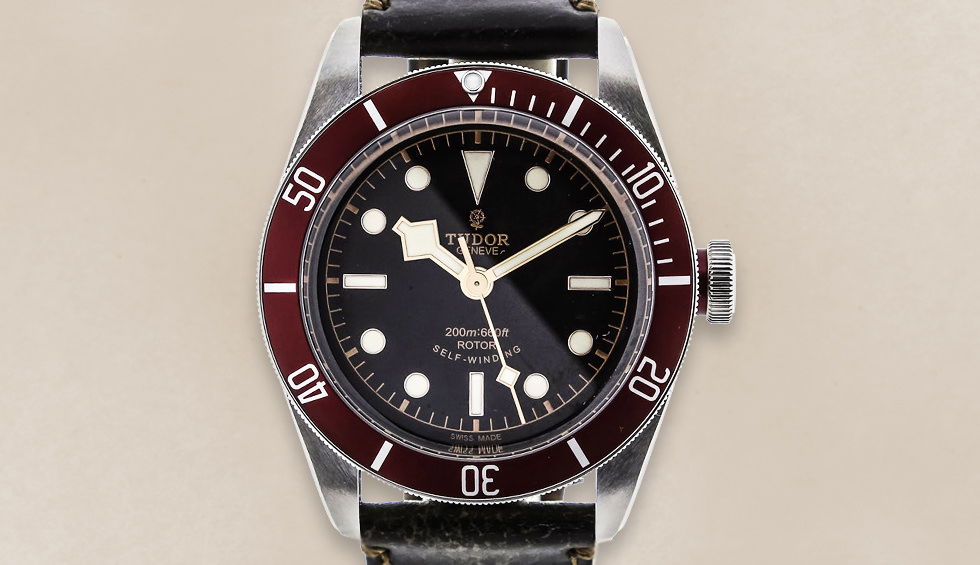
CLASSICS IN 25 YEARS?
The Speedmasters, Submariners and Monacos of this world have long been icons, and will with certainty continue to bless individual watchmakers catalogues for many years to come. However, we ask, which younger models have the potential to make their way into that prestigious, elitist circle of timeless classics? Follow us as we embark on a daring journey between almost-classics and lesser-known models, making bold predictions over which could slip into that very exclusive classics club along the way. A difficult task, since not all classics seem as such from the very beginning. Shortly after the Rolex Daytona or the Rolex Explorer were released, not even a betting man would have wagered a pretty penny that they would become two of the most popular sports watch models ever. So who knows which watch will be in 25 years? We almost certainly don’t. Nevertheless, however naïve, here’s our attempt at spotting a future icon in the making.
1. Nomos Metro

Nomos is one of a few German watch brands that seem to be doing a lot of things right these days. And since reputation feeds on heritage, and today is the best indicator of tomorrow, it should be of no surprise Nomos has made it into our list. The Glashütte-based manufacturer has a small range that packs a real punch, with several models that could soon be considered classics. Although the signature design of the Tangente could make it deserving of ‘classic status’ despite its short history, we’ve opted for the Nomos Metro. The Metro is noticeably different from other models. But even if the design introduces many new aspects, it never loses itself in the details and upholds that ‘holistically reduced’ charm with which Nomos has enriched the industry for years.
2. IWC Mark XVIII
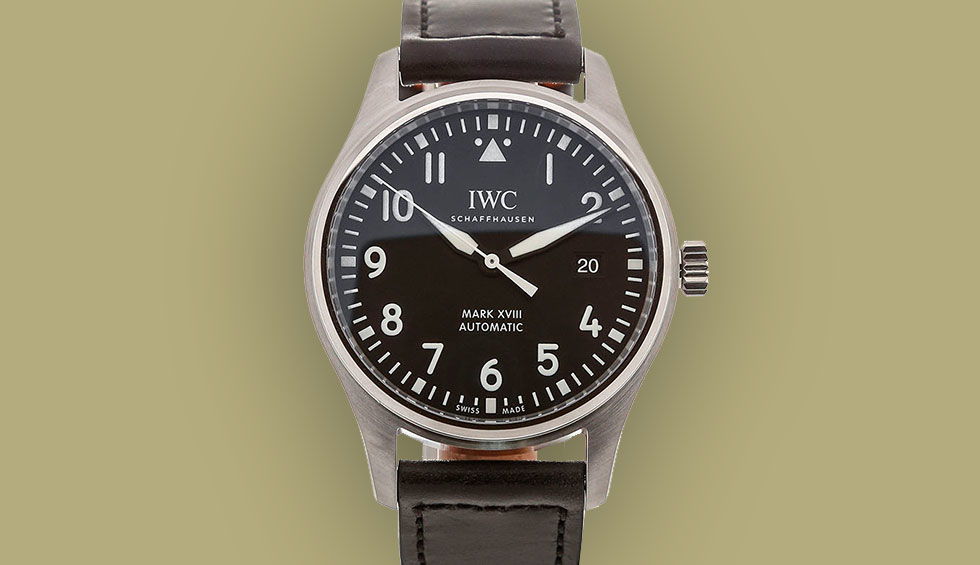
Refined almost to the point of perfection, the Mark XVIII presents itself more clearly than its predecessors. It stands for a return to simplicity and smaller dimensions – a long-called-for development amongst IWC enthusiasts. Disapproving of the IWC Mark XVIII for it being a concession to the public would be very wrong, however. Rather, it is a return to what IWC has always been and still is under the surface today. It is not the glamour of the feuilleton, rather the high technical standard and concise design that once made IWC great. This singular greatness is embodied in the Mark XVIII. It is therefore quite possible that in retrospect it will represent a caesura back to the origin of IWC and take its place in watch history.
3. Omega Speedmaster Racing

Yes we hear you, A Speedmaster Professional, that somehow also wants to be a Daytona “Paul Newman” – talk about split personality. But, if you’re honest, the Speedmaster Racing is an exciting addition closing that last remaining gap to be filled in the athletic-elefant Omegas. The watch is comfortable to wear and has a comfortable housing with a diameter of 40 mm. Not only because of the comparatively small housing size for a chronograph, but also because of the differently sized auxiliary dials in bold, contrasting whit, the Speedmaster Racing dances a little out of line. It would be a drastic exaggeration to count the Speedmaster Racing amongst the big Omega models already. However, the comparison to the Rolex Daytona isn’t just apt for the similarities in style between the two, the Daytona also once stood in the shadow of other models before rising to legendary status.
4. Junghans Max Bill Chronoscope

In 1961/1962 the Bauhaus designer Max Bill designed eight watch watches for the watch brand Junghans. The Ur-Bills are now admired collectors’ pieces and the new edition of the collection is today the center of a watch brand that has been re-invented after turbulent years. New in the Max-Bill design world is a chronograph, which is entirely built upon the original Max Bill designs and is supplemented by a chronograph movement. In the version with Arabic indices, the famous Max Bill “4” of course can’t be missing. The Chronoscope fits so seamlessly into the designs of Max Bill it’s as if it had always been part of the Max Bill collection.
5. Bold Prediction: H. Moser & Cie. Endeavour Perpetual Calendar

As a perpetual calendar, which does not even show the current day of the week, it is the allegory of a timepiece whose value is not recognizable at first sight. The only indication that this could be a complicated clock is provided by a small central pointer, which, according to the 12-adic system of the hour indices, indicates the current month. But how can a clock be designated as a perpetual calendar if it does not even assign a weekday to the date, you ask? Very easily. The real mechanical challenge, and the only reason why an eternal calendar is considered the pinnacle of calendar-mechanics, lies in the systemization of program-cycles to indicate the length of each month correctly. Unlike weekdays, these do not follow a simple sequence.
6. Rolex Sky-Dweller

The Rolex Sky-Dweller was introduced in 2012 and is still in its infancy and somewhat unknown within the Rolex lineup. However, even if the Sky-Dweller currently struggles for recognition amongst all the Rolex classics, from the Submariner to the Daytona, its made of the stuff of icons. As a daily rocker through and through Rolex, it is the perhaps most complicated watch in the current collection, with a function catalog composed of a calendar, GMT and 24-hour display. A total of five patents were filed for the Sky-Dweller – as is expected from Rolex, they do not fulfill a particular purpose, but serve usability and everyday use. In 25 years, the Rolex Sky-Dweller will be seen as what it is: a Rolex with an unusual amount of additional features, which makes it stand above the Sky-Dweller of other timepieces and lends it an interesting unique feature.
7. Bold Prediction: Hublot Classic Fusion Berluti

Anyone who has had the pleasure of having Hublot Classic Fusion on his wrist knows the unique quality of this watch well. Despite its size of 45 mm, it is surprisingly unobtrusive and the bracelet is incomparable to anything else on the market. It makes the saying “second skin” hold an entirely new meaning. However, it is not just the bracelet that makes the Classic Fusion so special: the shimmering dial of the typical patinated Venezuelan leather, for which the name Berluti is well-known, and the softly flowing colors that blend harmoniously between brown, gray and black, transform the watch into something completely new, something never before seen. One thing is clear: a watch in which the bracelet plays such a central role can only become a classic, if a lasting co-branding develops from the partnership between the watch brand and the Paris-based manufacturer of high-end shoes, so that Bracelets can still be exchanged in the distant future.
8. Jaeger-LeCoultre Master Ultra Thin Moonphase

In the long term, the success of a model is always determined by the extent to which it represents the DNA of a manufacturer and embodies the image of a brand. When it comes to this, the Master Ultra Thin, alongside the all-time classic Reverso, is the essence of a Jaeger-LeCoultre: the collection not only takes on the inheritance for the production of ultra-flat housings, which dates back to the year 1907, but also makes use of the watchmaking core disciplines of the Le Sentier manufactory. Power-reserves (?) must be present, as with the classics Powermatic and Futurematic. As do the various calendar systems that count amongst the most beautiful watches in the company’s history. The moon-phase (?) version is one of Mantredo’s absolute favourites and is regularly one of our top-sellers. With a diameter of 39 mm it is the perfect size for a dress-watch of a simultaneously modern and timeless coleur. The version with the perpetual calendar is particularly special: The Master Ultra Thin Perpetual Calendar is considered the world’s first ultra-fast watch with a perpetual calendar and automatic lift (?). The Swiss made perpetual calendar also sets new standards in terms of cost, with a price in the very low five-digit range for the steel variant.
9. Tudor Black Bay

Tudor really takes the word heritage to a whole new level here and presents a Diver that fully meets the heritage of Rolex. The shape of the hour hand is borrowed from the legendary Tudor Submariner Snowflake and the indices are more similar to the classic Rolex submariner or the namesake Tudor variant with reference 76100. Even though the design concept has not changed fundamentally compared to the submariner – even in a quarter-decade what will be remembered are the new name and the unfamiliar color variations in Bordeaux and Navy Blue. Not to mention, of course, the fact that in-house clocks have been used for some time now.
10. Longines HydroConquest

It is hard to believe that Longines’ HydroConquest model series only entered the scene as recently as 2007 when the sentiment is that it has existed for half an eternity. Regarding the design, only loosely based on the Longines legendary Conquest, it now maps the diving-watch series within the wider brand portfolio. Today, the HydroConquest is already the epitome of a high-quality and robust chronograph watch at an incredibly reasonable price considering it’s equipped with a high-quality gear wheel caliber. Not that the name HydroConquest will be mentioned in the same breath as the all-time classics Fifty Fathoms and Submariner, but an end to the success of this, the preordained first mechanical sport watch for every Neo-watch-aficionado, is not showing any signs of declining in the next 25 years.



